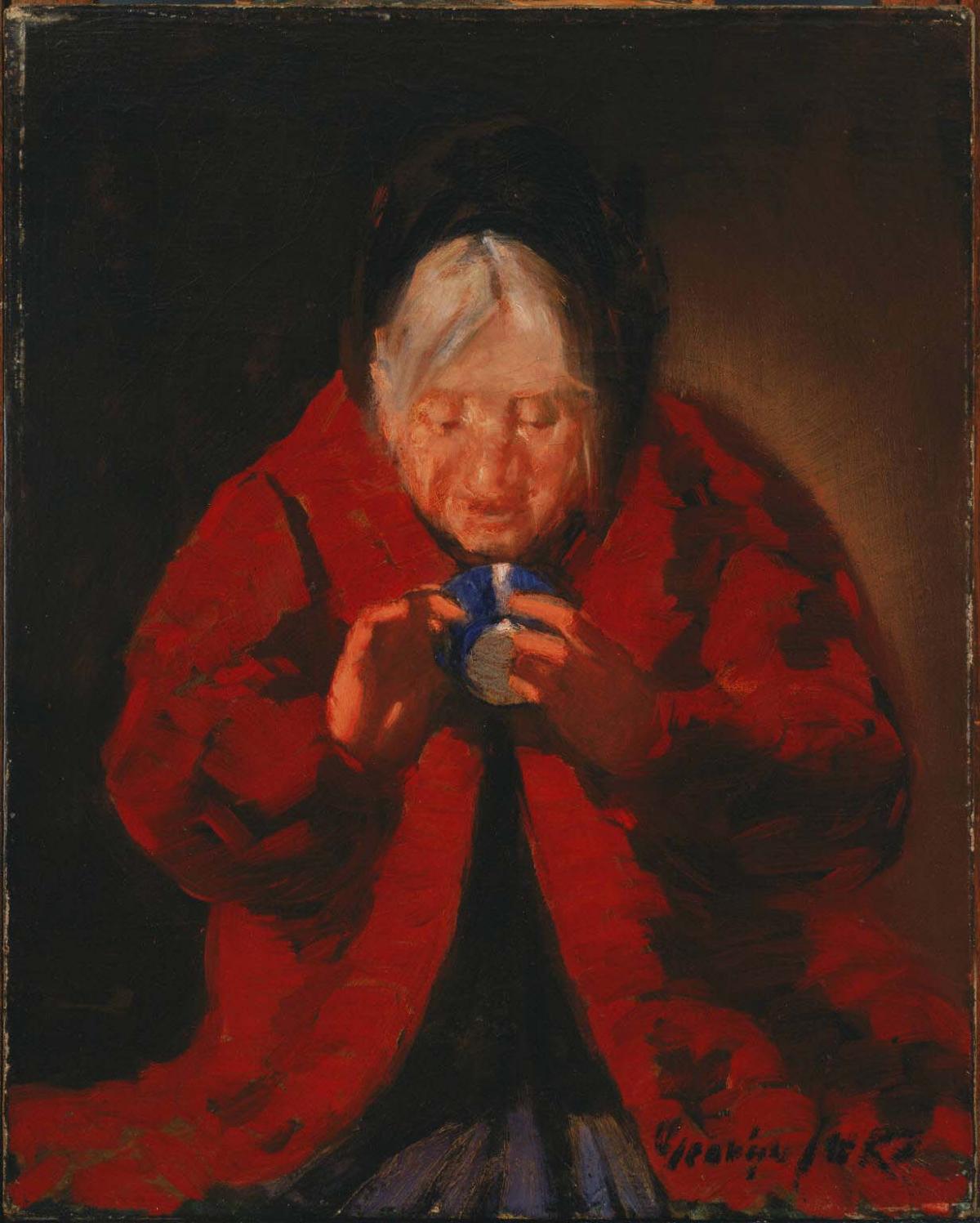Telling Fortunes
George Luks ( 1914 )

Trained as a realist painter, first at the Pennsylvania Academy of Fine Arts and then in Dusseldorf, Paris, and London, George Luks became friends in the early 1900s with William Glackens, Robert Henri, and John Sloan, who formed the nucleus of a group of progressive artists known as “The Eight.” It was the deliberate snubbing of one of Luks’s paintings for the National Academy of Design’s 1907 salon that inspired The Eight’s ruckus with the Academy over who should be allowed to exhibit. Notorious for insulting the boundaries of “good taste” in painting, Luks became the bad boy of The Eight when he showed paintings of pigs and other low-life subjects at the 1908 exhibition the group held at Macbeth Galleries in New York to protest the Academy’s restrictions.
Luks’s brand of realism is evident in Telling Fortunes, a dark, intimate study of a seedy character, a gypsy fortuneteller from the gritty streets of New York’s Lower East Side. He puts emphasis on the color palette, with deep crimsons mixed with muddy gray, along with thick, blurred brushwork accentuating the woman’s low status, as the portrait is not meant to convey power or prestige. Yet, by painting the gypsy woman against an ambiguous background, which seems to subtly glow around her, Luks manages to portray a sense of dignity about her, reminiscent of the work of French Baroque painter George de la Tour, who painted similar subject matter in a like manner of painting.
Duncan Phillips, who knew Luks and gave him his first solo museum exhibition in 1926, admired the manner with which Luks could paint “adventurers and derelicts with the stylish caricature of a Charles Dickens.”